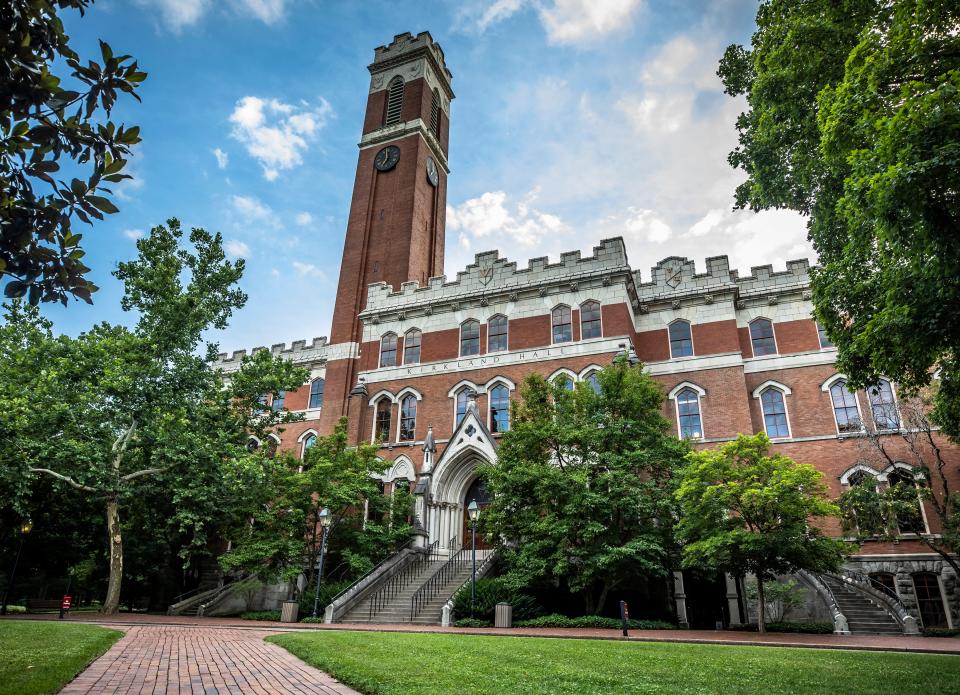How renovating historic buildings has so many benefits for Nashville | Opinion
There are approximately 50 construction cranes in the Nashville area. And every one of them represents growth and opportunity.
The city is evolving with essential infill that makes Nashville a more urban and walkable city, enhancing amenities across districts that continue to attract residents and jobs.
Skanska has played a role in many of these skyline-changing projects, including marquee properties such as Fifth + Broadway and the JW Marriott Nashville. It’s exciting to build new buildings, but as the city evolves, we are just as excited to resurrect Nashville’s historic properties, preserving them for generations to come and helping maintain the city’s character.
Nationally, this trend is growing. Partial or complete renovation of existing buildings is increasingly being requested in the markets we serve. Already, 11% of our revenue comes from renovation projects.
Nashville has ample opportunities to integrate its historic and classic structures into its development.
It is important to keep in mind that refurbishment is not always possible. Sometimes older buildings have fallen into disrepair beyond salvaging, or renovation proves impractical due to cost and lack of contribution of the existing building. But when renovation is possible, there are notable advantages.
More: Learn about candidates running in the Aug. 3 Nashville mayoral election | Editorial
Hear more Tennessee Voices: Get the weekly opinion newsletter for insightful and thought provoking columns.
Preserving culture and history
Preserving the historic buildings that made Nashville what it is today keeps us connected to our past.

In 2013, a consultant recommended demolishing Cordell Hull, an 11-story art deco edifice built in 1954 with a limestone exterior and rose-colored marble finishes throughout — materials that would be cost-prohibitive to build with today.
Preservationists urged Gov. Bill Haslam’s administration to renovate and maintain the building, emphasizing its deep ties to state history. Skanska was awarded the renovation of the building in 2016 to establish new offices for state legislators and other state staff. Conference rooms were created to enhance usability. New entrances increased accessibility, and a tunnel was added that connects to the state capitol, breaking up the long walk with arches and design touches worthy of the buildings it connects.
Sign up for Black Tennessee Voices newsletter:Read compelling columns by Black writers from across Tennessee.
Environmental and sustainability benefits
Renovation also allows you to bring a legacy property into the modern era. Simply installing a new roof, windows and plumbing dramatically reduces an older building’s energy consumption.
We are currently renovating Vanderbilt University’s Kirkland Hall, which opened in 1875. The iconic structure defines Vanderbilt’s campus, with a 170-foot clock tower that presented an incredible opportunity, but also many logistical challenges, due to the intricate details of its design.
We are upgrading the roof, windows, and even the stairs to increase ventilation, all of which will boost energy sustainability. The reworking also allows us to make the building ADA-compliant, increasing accessibility.
The ability to reuse construction materials helps us reduce carbon emissions. At Cordell Hull, original marble was removed, restored and reinstalled, to preserve the building’s historic aesthetic. At Kirkland Hall, the original interior brick that was covered up by multiple renovation projects will be refurbished and exposed again in its original form.
Sign up for Latino Tennessee Voices newsletter:Read compelling stories for and with the Latino community in Tennessee.
Historic renovations have economic benefits
For the ultimate example of a crucial historic renovation, look to the Ryman Auditorium. The Mother Church of Country Music sat largely empty for 20 years, after the Grand Ole Opry moved out in 1974. Demolition rumors swirled, largely due to the poor condition of the venue.

But dedicated community members fought successfully to save the Ryman. Renovations began in 1989, and it reopened in 1994 as a premier performance hall. Today it is one of the most hallowed music venues in the world, and it is impossible to imagine Nashville without it.
Destinations such as the Ryman contribute greatly to the character of Nashville, showcasing the unique architecture that makes the city so special.
It takes more time and investigative work to revitalize a historic building. Issues will arise that are unexpected, and sometimes costly, and a developer must be able to react nimbly to problem-solve.
It isn’t always easy. It’s not always possible. But Nashville’s past provides an opportunity we should not ignore, to preserve historic structures, bring them up to modern standards, and let their history and character shine.
Dennis Georgatos is senior vice president, account manager at Skanska USA Building
This article originally appeared on Nashville Tennessean: Renovating historic buildings has so many benefits for Nashville

